Designing for parent-child interaction through storytelling and craft
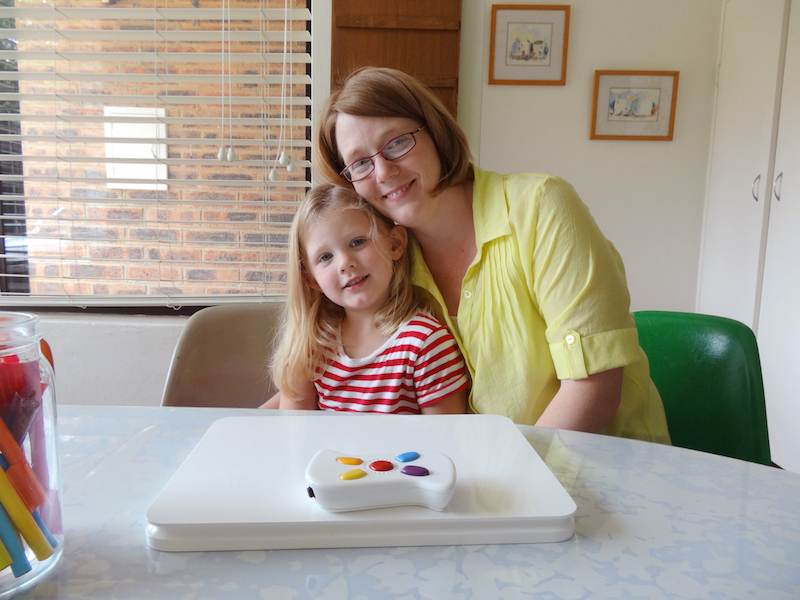
Overview.
Storytelling is a great time for parents and children to spend time together, and it creates a wonderful atmosphere of imagination, creativity, and learning. Estoria is a facilitator for parents and children to spend time together, creating, imagining, and visualising stories through spoken word and physical craft.
Much like a photo taken on a camera will capture an entire moment, craft pieces created through Estoria will capture entire stories. These visualisations of created stories can be kept and treasured over the years as a reminder of the wonders of a child’s imagination.
Estoria was a design research and industrial design concept piece created for my major work, during my honors year.
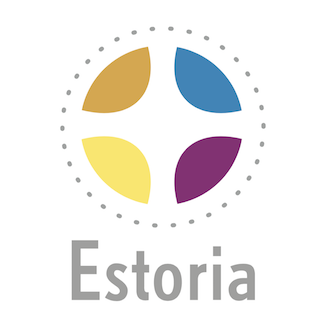
My roles and responsibilities:
This project took place during my undergraduate honours year in 2013. I independently worked on Estoria as both a Researcher and Industrial designer in training under the guidance of Dr. Elise van den Hoven, MTD.
Problem statement:
In a world where screen-based technology is rampantly addictive, how might we create a habitual, off-screen space where children can learn through creativity: both independently and alongside their guardians.
Users:
Estoria is targeted for children who are able to tell and reimagine stories. From desk research, hands-on experience, and discussions with parents, the targeted age group for Estoria is children from preschool to primary school years (specifically 3-9 years of age) and their guardians.
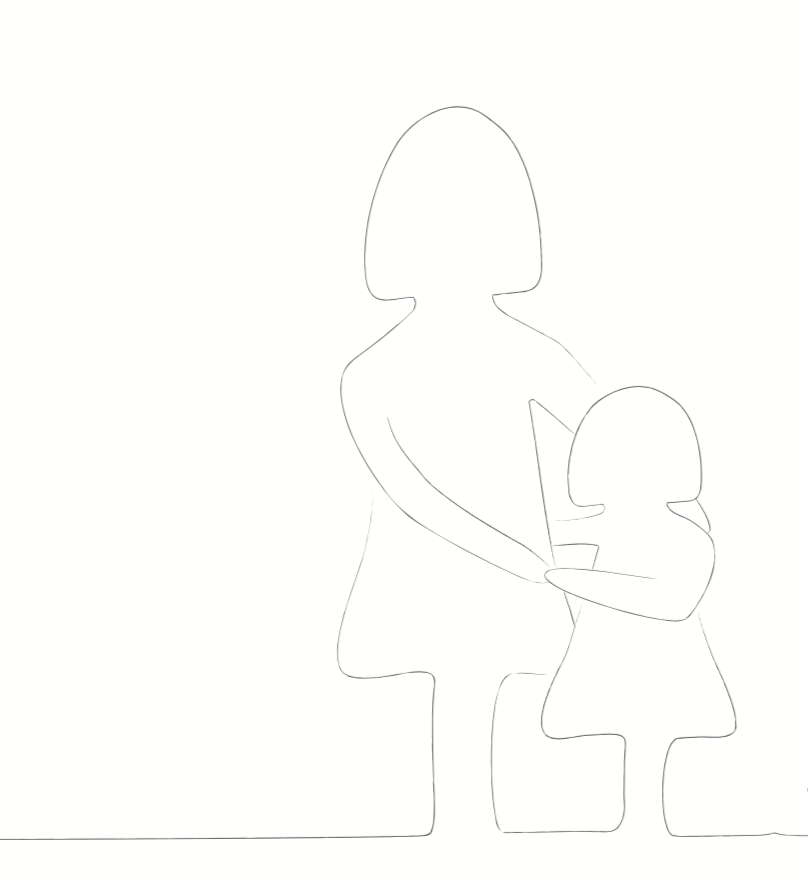
Scope and considerations:
Estoria was designed to fit within the busy schedule of a young family, nestling into common rituals such as the bedtime story and drawing. Considerations of the physical product included compliance of Australian standards for children’s products, durability to withstand the rough play of children, longevity of product life to ‘grow’ with the child (minimum 4 years), an appropriate price point (less than $50), and responsible environmental consideration (manufacturing, materials, and end of life).
Process.
Initial research:
Being primarily a research project, I had begun weekly volunteering at a local church’s playtime and accepted a casual job at a before and after school care. Through these roles, I was able to build friendly relationships with many parents and their children alike, and had the opportunities to conduct many informal interviews, surveys, and A/B testing, and general guerilla testing sessions with both parents and children from infant to pre-teen years.
Through desk research and subsequent follow ups with parent and child, I formed an understanding of ‘regular’ routines, the comprehension and creativity of children, the constant battles with screen technology, and the desire of children to spend quality time with their parents.
Focus area:
In a world where time is often limited and screens are addictive, my desire was to build upon existing rituals between parent and child, enhancing the opportunity for creative and cognitive development. I chose the bedtime story, as whether the child was 3 or 10, most children and guardians that I spoke to engaged in and enjoyed the bedtime story ritual. From informal interviews with parents, I learned that these stories were not necessarily limited to books or exclusively read to the children as the roles were often reversed: children often wanted to read for their parents or created and retold stories from the illustrations.
Alongside this insight, academic studies were then explored on the benefits of storytelling by children and I decided to move forward with storytelling as the chosen ritual and main creative tool.
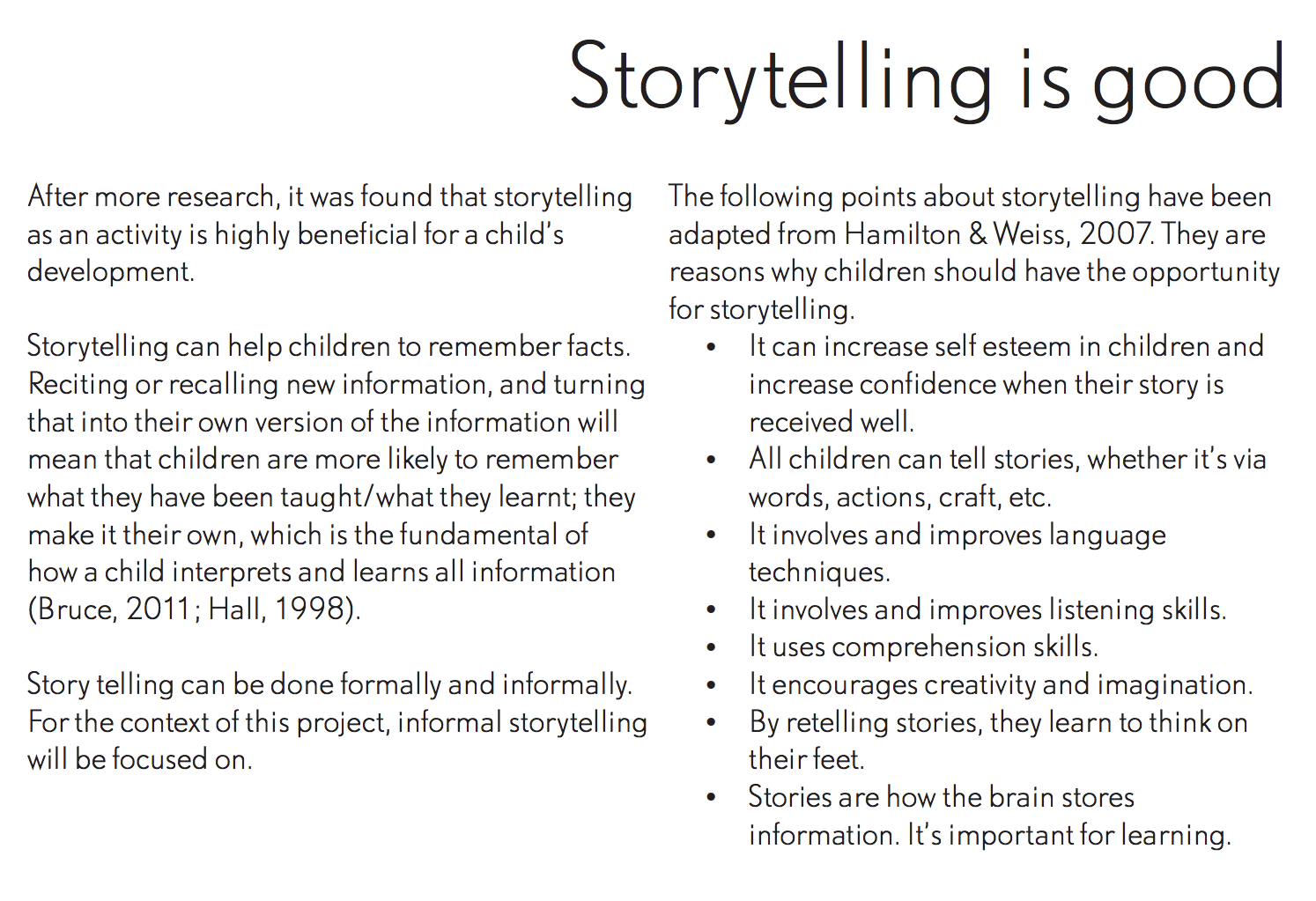
From here, Estoria began to form.
My goal was to create a non-obtrusive tool that could seamlessly slip into the ritual of bedtime stories, specifically used for recording and playing stories back with or without an accompanying story book. The focus was on building a habit of creating and recreating stories, rather than accumulating stories; this way, the focus is on continual development rather than cumulative collection.
What is Estoria?
Estoria is one simple solution to address a complex problem.
Estoria is a facilitator for the creation, recording, visualisation and keeping of stories between parent and child and can be broken down into two main functions: recording and visualising. Available for children aged 3+ years, parent and child come together to create short stories together before bed each night. At a later time, these stories can be played back and visualised through drawing or crafts, adding some longevity to the stories while also building upon comprehension and motor skills.
Aesthetics:
The way a form communicates and invites use is a challenge I will happily undertake. Estoria’s form was used to communicate intent by limiting and clearly displaying a specific number of “channels” the recordings could be stored behind. Colour was used to distinguish between the different channels, all circling the red ‘record’ button in the middle (the main function).
Estoria was also designed to be unobtrusive yet desirable to interact with, and ultimately able to be held or hugged with the hands.
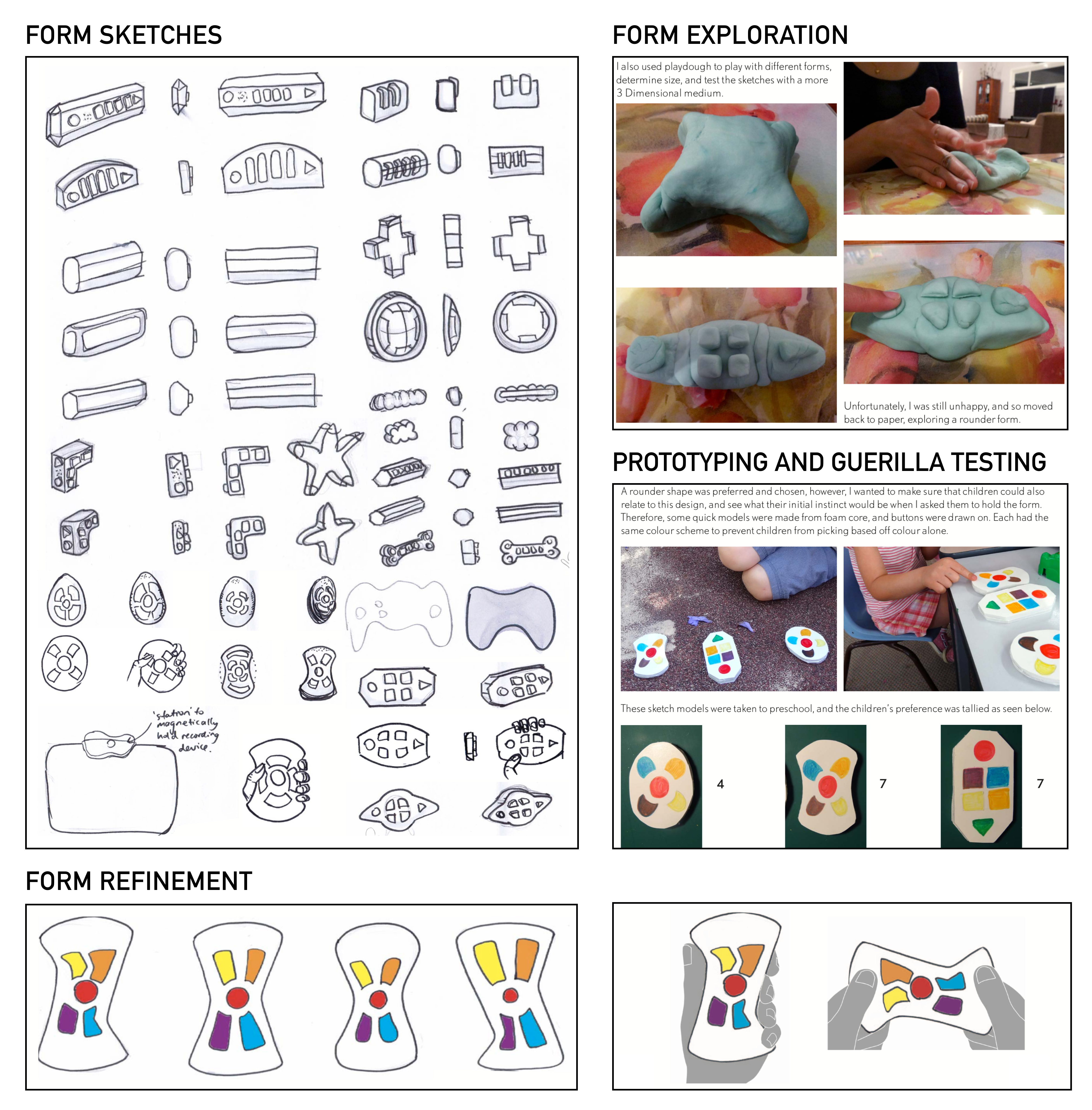
The visualisation station was designed for functionality to support the recording device. As this is where parent and/or child can illustrate or recreate their stories through drawing, the vis-station contains a shallow storage compartment to store paper and pencils. The compartment opens and closes magnetically, with a lip that communicates it’s open point, and minimises pinch points for tiny fingers.
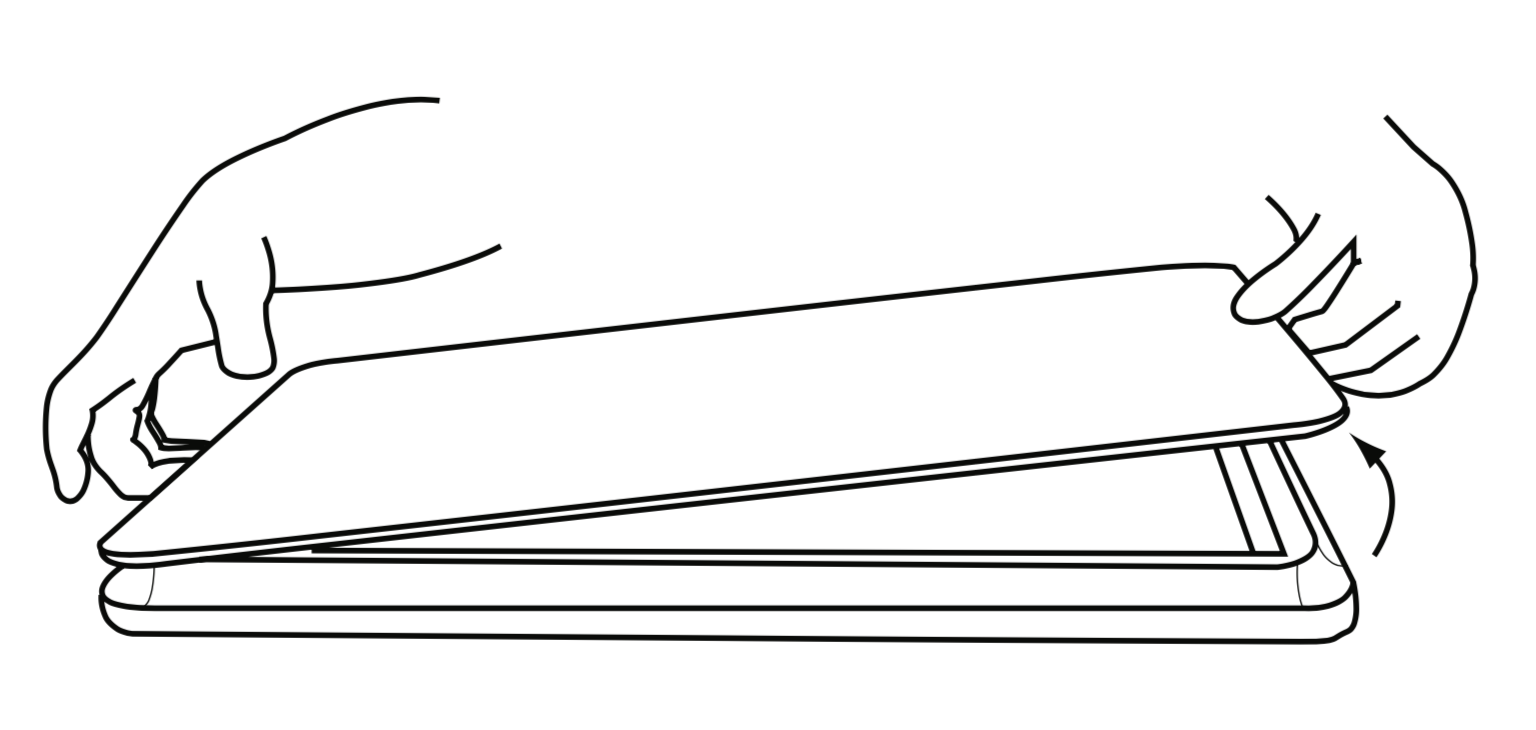
The use of magnets also allows the recording device to attach to the vis. station, simultaneously holding down the paper and allowing the user to play back the stories easily as they recreate them through craft.
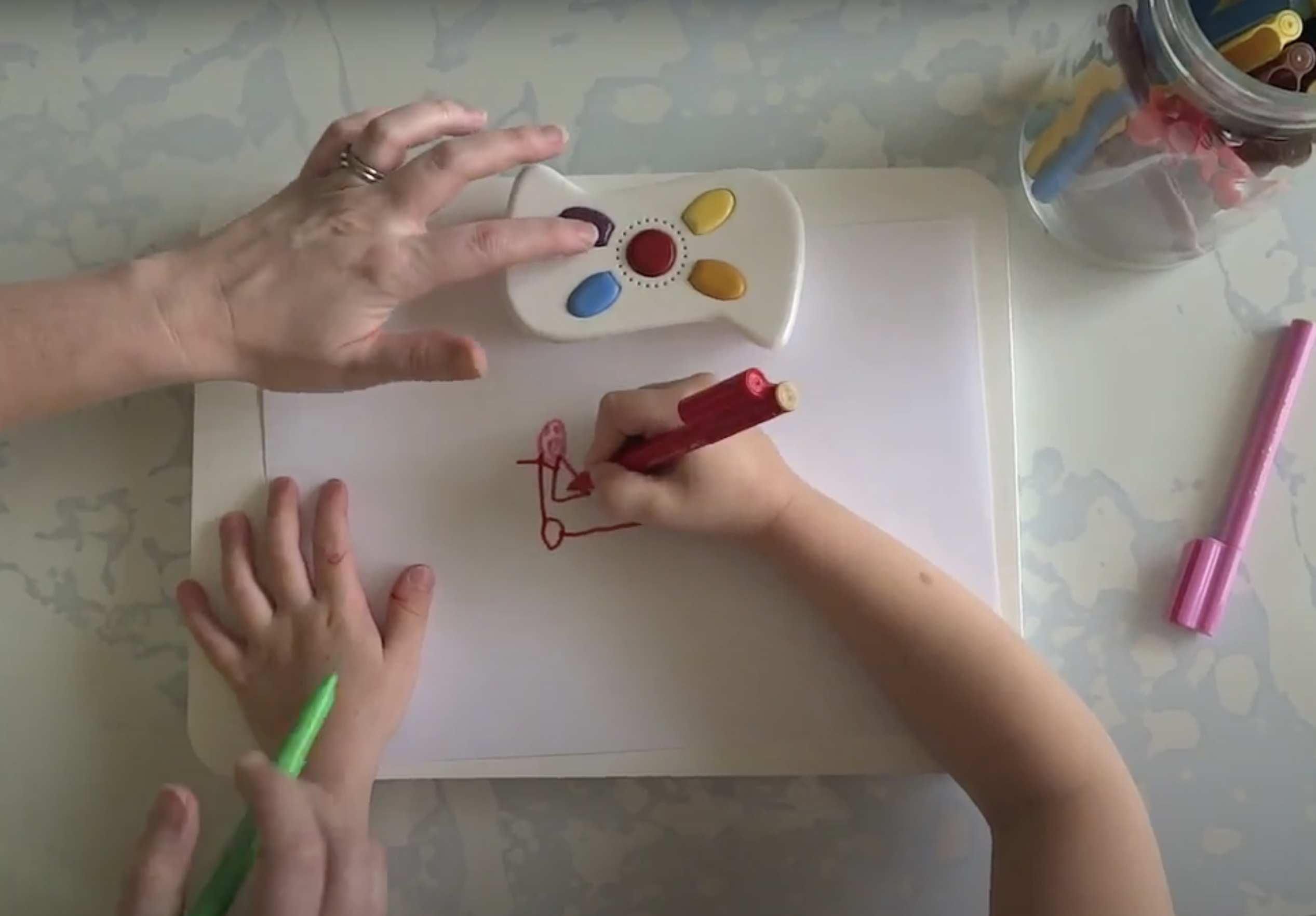
They also allow the Estoria to attach to other ferromagnetic surfaces such as the fridge, drawing upon another pastime of displaying children’s art on the fridge, alongside their original stories.
Use and user testing:
Designing how users interact with a product is my personal favourite part of the design process. When testing the operation of Estoria, a prototype was mocked up in an earlier form and user-tested with children at a local pre-school.
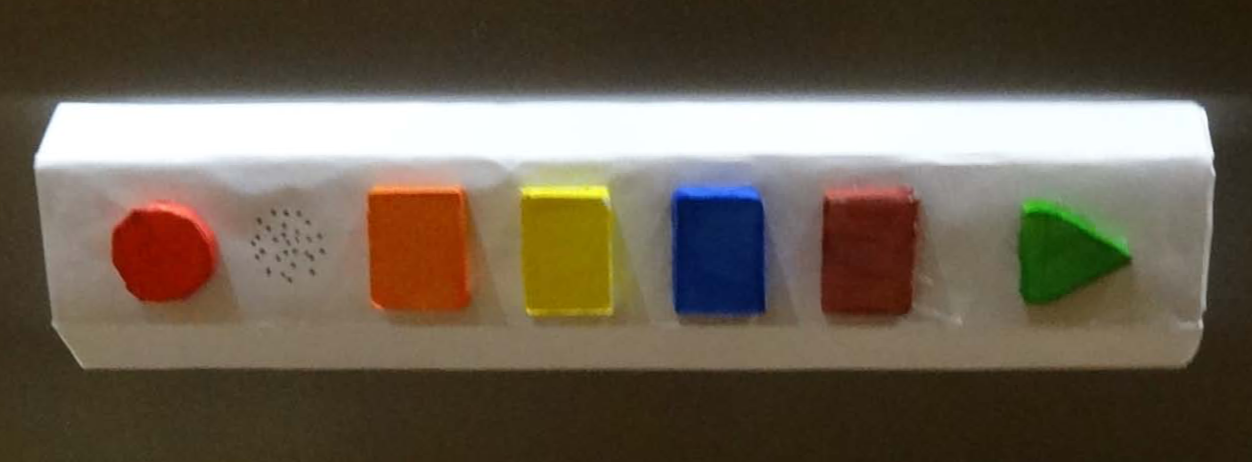
I showed pre-schoolers the model, and briefly told them that it was a pretend model of a device that will record their stories. I held it out to them individually and asked them what they would press if they wanted to record a story, making observations of which button/s they pressed and in which order. I also tested the comprehension of children of preschool age and their ability to learn a behaviour by showing them an action, asking them to repeat it immediately, then again 10 minutes later after they had done a different activity. Through these tests, I was able to put a user guide together for Estoria, confident that children would be able to replicate the actions later.
Production:
Production is the area I easily get lost in as a designer. Working out all the finer details of how Estoria could be built while staying within the parameters of budget, timeframe, and compliance is a problem I genuinely enjoy solving.
Estoria went through the works, from listing electronic components, to housing small parts securely, environmental considerations of materials, bill of materials (with estimates for a 500 piece run), injection moulding estimates, assembly and disassembly (where applicable), technical drawings, instruction books, and prototype construction.
Each area was considered, documented, and tested (where applicable) to work down to a raw cost of $24.10 per item, alongside a working electronic prototype.
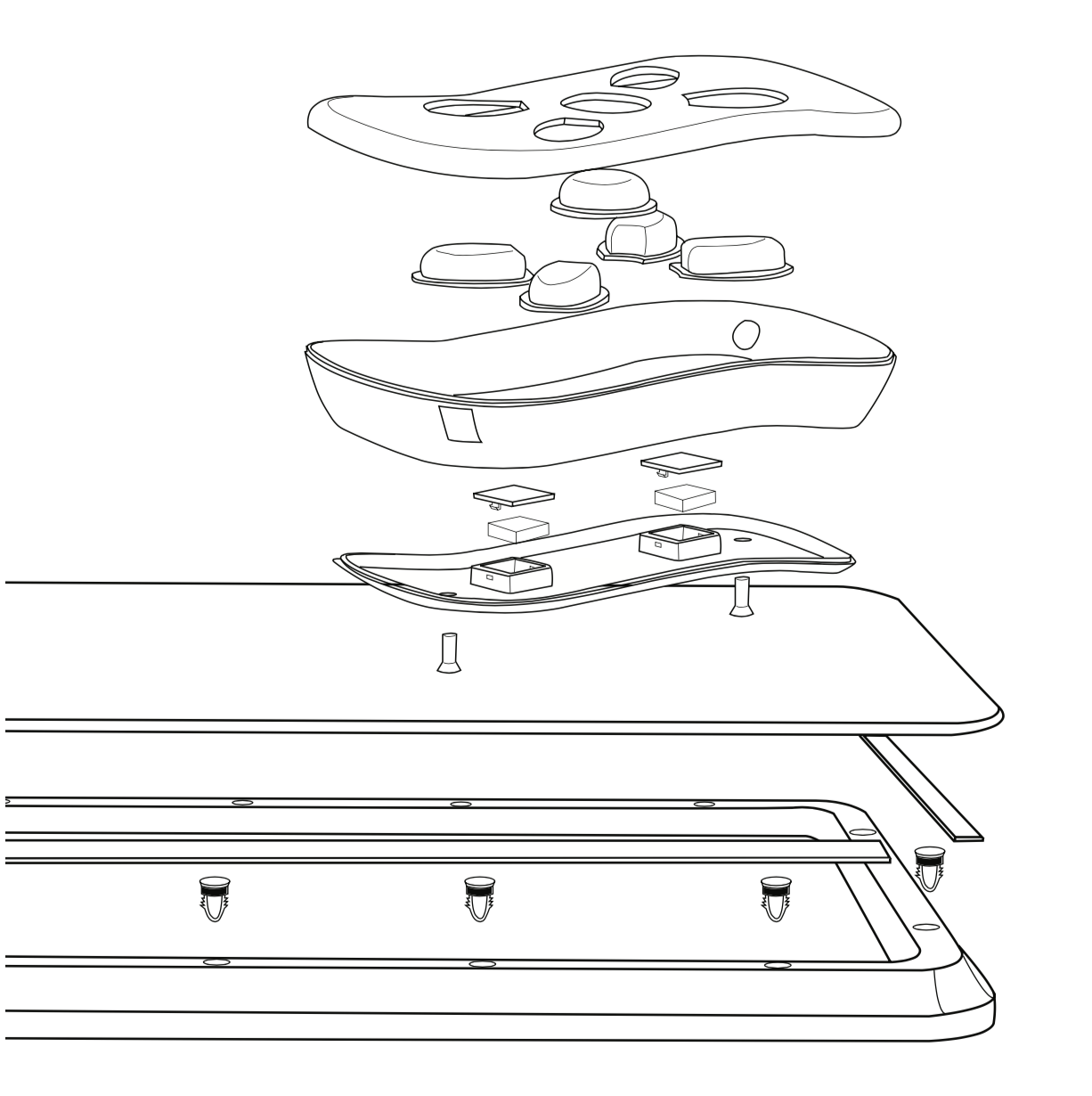

Lessons:
I understand that Estoria was a concept piece which can be perceived as ‘magic’ design that might not reflect real-world constraints. While this may be the case, the process involved in Estoria still allowed me to walk through a project from problem space, to research, validation, testing, prototyping, production, supply chain, and more. It highlighted the journey of a project and helped me to learn which parts of the design journey I most enjoy (use, testing, production and prototyping) and need more experience in (aesthetic, POS, manufacture).